"""
Project : Detection of Covid19 Presence from Chest X-Rays Scans
Participant: Suraj Gehlot
Mail: suraj.gehlot@somaiya.edu
Githhub: github.com/enggsuraj/covid19_classification.git
Original file is located at: colab.research.google.com/drive/1LjxxXFCfkpzsC7WSlwe3gDAHWLcCHP28
**Covid19 Chest Xray Classification Model**
Three Classification
1. COVID-19
2. NORMAL
3. VIRAL PNEUMONIA
Steps:
1. Examine and understand data
2. Build an input pipeline
3. Build the model
4. Train the model
5. Test the model
6. Improve the model and repeat the process
Note: This is only training model model, android app building is done after exporting model to android studio.
"""
import tensorflow as tf
print(tf.__version__)
import datetime
from tensorflow.keras.models import Sequential
from tensorflow.keras.layers import Dense, Conv2D, Flatten, Dropout, MaxPooling2D
from tensorflow.keras.preprocessing.image import ImageDataGenerator
import os
import numpy as np
import matplotlib.pyplot as plt
# IMPORTING IMAGE DATASETS FROM GOOGLE DRIVE
from google.colab import drive
drive.mount('/content/gdrive')
import os
import shutil
PATH='/content/gdrive/My Drive/ML'
#install PyDrive so we can upload our dataset from Google Drive
!pip install PyDrive
base_dir = os.path.join(PATH, 'Covid19')
print(base_dir)
BATCH_SIZE = 100
epochs = 5
IMAGE_SIZE = 224
IMAGE_SIZE = 224
#ARRANGING DATASETS
datagen = tf.keras.preprocessing.image.ImageDataGenerator(
rescale=1./255,
validation_split=0.2)
train_generator = datagen.flow_from_directory(
base_dir,
target_size=(IMAGE_SIZE, IMAGE_SIZE),
batch_size=BATCH_SIZE,
subset='training')
val_generator = datagen.flow_from_directory(
base_dir,
target_size=(IMAGE_SIZE, IMAGE_SIZE),
batch_size=BATCH_SIZE,
subset='validation')
for image_batch, label_batch in train_generator:
break
image_batch.shape, label_batch.shape
print (train_generator.class_indices)
labels = '\n'.join(sorted(train_generator.class_indices.keys()))
with open('labels.txt', 'w') as f:
f.write(labels)
sample_training_images, _ = next(train_generator)
def plotImages(images_arr):
fig, axes = plt.subplots(1, 5, figsize=(20,20))
axes = axes.flatten()
for img, ax in zip( images_arr, axes):
ax.imshow(img)
ax.axis('off')
plt.tight_layout()
plt.show()
plotImages(sample_training_images[:5])
#CREATING MODEL
# Mobilenet_ssd
IMG_SHAPE = (IMAGE_SIZE, IMAGE_SIZE, 3)
# Create the base model from the pre-trained model MobileNet V2
base_model = tf.keras.applications.MobileNetV2(input_shape=IMG_SHAPE,
include_top=False,
weights='imagenet')
base_model.trainable = False
#ADD OWN DENSE LAYER
model = tf.keras.Sequential([
base_model,
tf.keras.layers.Conv2D(512, 3, activation='relu'),
tf.keras.layers.Dropout(0.2),
tf.keras.layers.GlobalAveragePooling2D(),
tf.keras.layers.Dense(3, activation='softmax')
])
model.compile(optimizer=tf.keras.optimizers.Adam(),
loss='categorical_crossentropy',
metrics=['accuracy'])
model.summary()
ACCURACY_THRESHOLD = 0.90
class myCallback(tf.keras.callbacks.Callback):
def on_epoch_end(self, epoch, logs={}):
if(logs.get('acc') > ACCURACY_THRESHOLD):
print("\nReached %2.2f%% accuracy, so stopping training!!" %(ACCURACY_THRESHOLD*100))
self.model.stop_training = True
# Instantiate a callback object
callbacks = myCallback()
logdir = os.path.join("logs", datetime.datetime.now().strftime("%Y%m%d-%H%M%S"))
tensorboard_callback = tf.keras.callbacks.TensorBoard(logdir, histogram_freq=1)
#TRAINING
model.fit_generator(train_generator,
epochs=epochs,
validation_data=val_generator)
from keras.preprocessing.image import ImageDataGenerator, load_img, img_to_array
import matplotlib.image as mpimg
#TESTING
img=mpimg.imread('/content/gdrive/My Drive/ML/Covid19/COVID19/COVID-19 (1).png')
imgplot = plt.imshow(img)
plt.show()
#TESTING
x = load_img('/content/gdrive/My Drive/ML/Covid19/COVID19/COVID-19 (1).png', target_size=(IMAGE_SIZE,IMAGE_SIZE))
x = img_to_array(x)
x = np.expand_dims(x, axis=0)
array = model.predict(x)
result = array[0]
print(array)
answer = np.argmax(result)
print(answer)
#SAVING MODEL
saved_model_dir = 'save/fine_tuning'
tf.saved_model.save(model, saved_model_dir)
converter = tf.lite.TFLiteConverter.from_saved_model(saved_model_dir)
tflite_model = converter.convert()
with open('model.tflite', 'wb') as f:
f.write(tflite_model)
from google.colab import files
files.download('model.tflite')
files.download('labels.txt')
# AFTER THIS model.tflite and label.txt are deployed in tensorflow based classification code in android studio


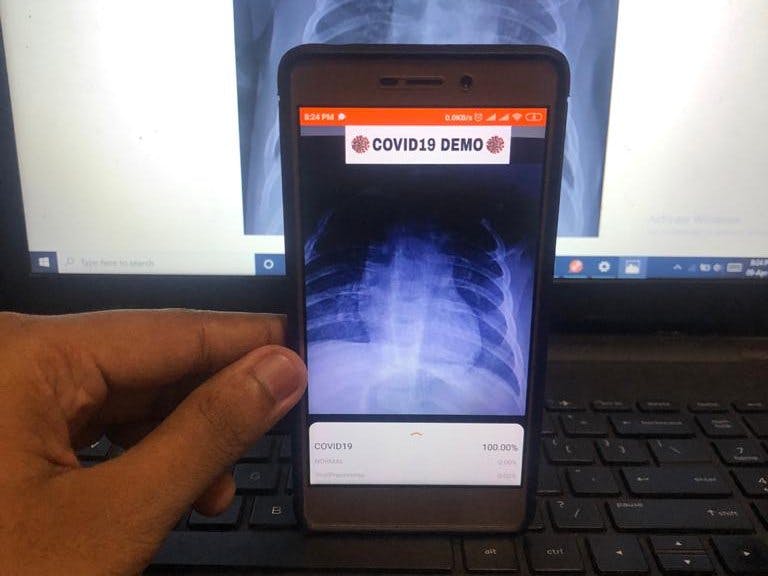




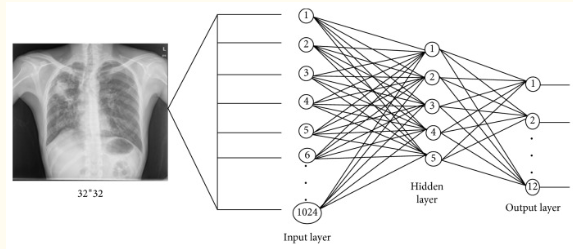
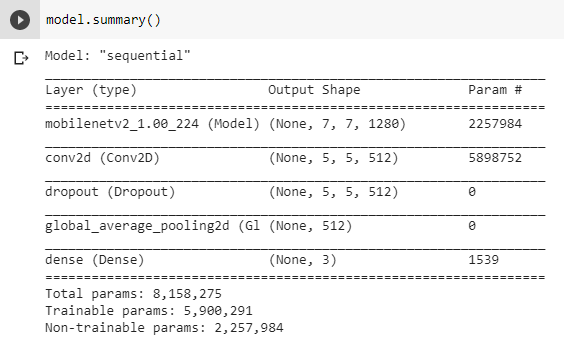
_BP0Y547Y48.png)
_1e9Jlzlj2Q.png)
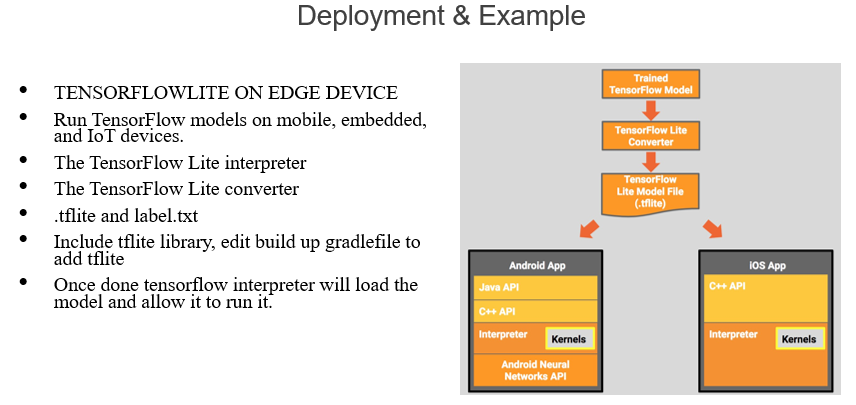
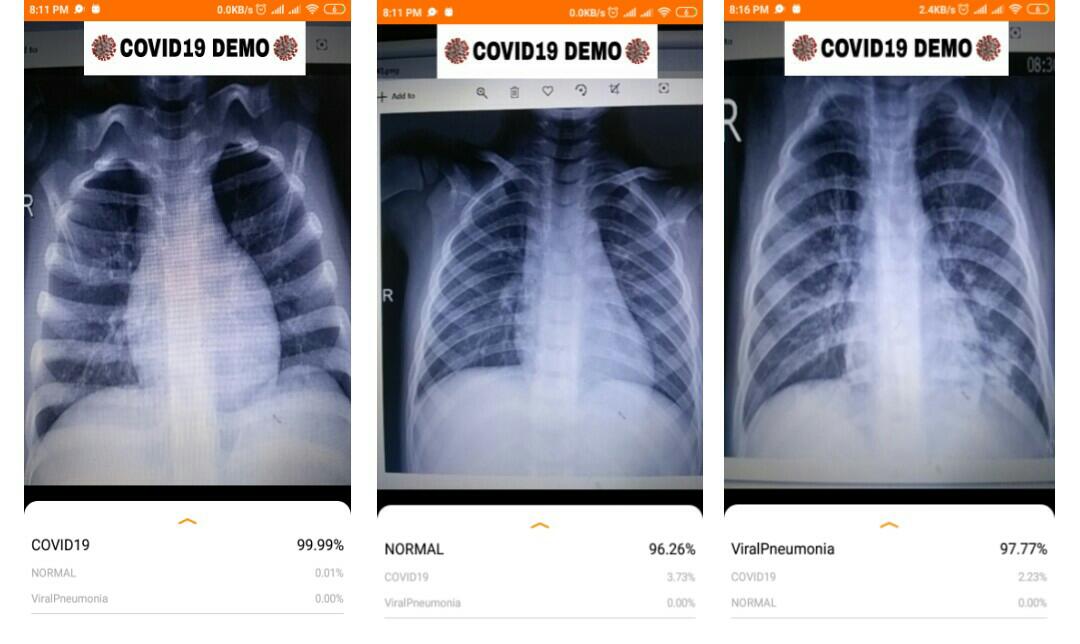






Comments